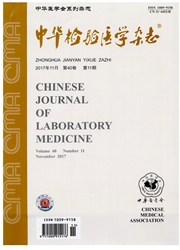

 中文摘要:
中文摘要:
目的研究表面等离子体共振(SPR)系统在临床病原微生物的基因芯片检测中的应用。方法对27份临床样本进行SPR的芯片检测。其中血液阳性标本8份,脓液阳性标本3份,白带阳性标本及生殖道脓液标本9份,活组织检查阳性标本1份,活组织检查阴性标本6份。采用生物信息学方法设计各靶病原体特异的引物和探针,并分别利用PCR技术以及酶标化学发光芯片技术对设计的引物和探针进行验证;制备的SPR响应型基因芯片,结合SPR芯片系统对临床标本进行检测。结果设计的引物和探针经验证均具有良好的特异性和准确性,能够顺利实施对各靶病原体的有效扩增和对芯片的检测应用;新构建的基因芯片结合SPR芯片系统对临床26份标本的检测结果与临床常规检测结果一致。结论SPR检测系统具有良好的检测性能,检测方法准确可靠,可应用于对临床病原微生物的芯片检测。
 英文摘要:
英文摘要:
Objective To study application of surface plasmon resonance (SPR) system in detection of clinical pathogen with a gene chip. Methods 27 clinical samples were detected by SPR-based gene chip system. These samples were composed by 8 positive blood samples, 3 positive pyoid samples, 9 positive leucorrhea samples and positive reproductive tract pyoid samples, 1 positive biopsy sample and 6 negative biopsy samples. Specific primers and probes for target pathogens were designed by bioinformatics methods and validated by PCR and enzyme-labelled chemiluminescence, respectively. SPR-based gene chip was prepared and utilized to detect clinical samples by SPR system. Results The primers and probes showed good specificity and accuracy, which can be applied to perform PCR and application of the gene chip. Compared with the clinical analysis, gene chip analysis of 26 clinical samples showed the consistent results. Conclusions SPR detection system proved to be accurate and reliable. The chip will have a promising prospect in application.
 同期刊论文项目
同期刊论文项目
 同项目期刊论文
同项目期刊论文
 期刊信息
期刊信息
